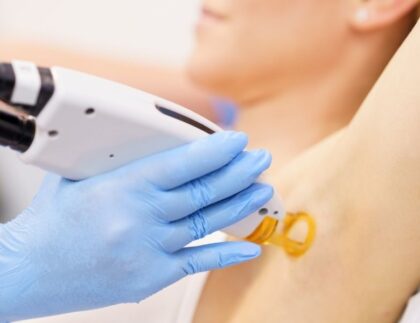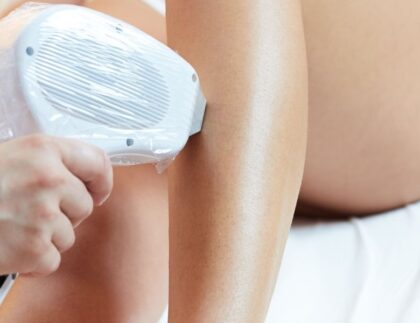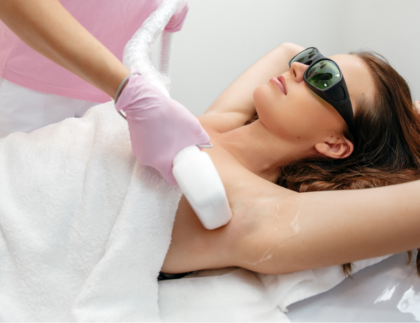Chemical Peels
If you’re starting to feel self-conscious about your face starting to show the signs of aging and natural wear-and-tear, then you may want to consider getting a chemical peel. A chemical peel is a cosmetic procedure performed to even out the overall appearance of your face, neck, or hands.
Chemical peels are among the least invasive cosmetic surgeries and will lead to a more youthful appearance without the recovery period of a facelift.
What to Expect Before the Procedure
Before the medical procedure, your doctor, or the nurse, will prep you for what’s to come. For a chemical peel, this means they need to protect your eyes. Most doctors will do so by rubbing ointment around your eyes, covering them with gauze, or putting goggles on you. Depending on the doctor and the type of peel, they may also decide to protect your hair. But, you have to remember that the doctor should take the steps to make sure your eyes are safe–you can’t enjoy your healthy looking skin if you can’t see it. If they don’t do anything for your eyes you should refuse the treatment.
A good candidate for a chemical peel will have minor signs of aging and some skin discoloration. You may also want to consider a chemical peel if you feel self-conscious about acne scars, wrinkles, sagging skin, or any other visible signs of aging.
You should not consider having a chemical peel if you are pregnant or nursing, have taken Accutane in the last six months or are currently taking it. You should also avoid chemical peels if you have a skin condition like rosacea or eczema.
What to Expect During the Procedure
Your expectations should vary based on the type of chemical peel you’re planning to get. There are three different versions of the chemical peel, and each will have a different level of results.
Superficial Peel
Also known as the lunchtime peel, the superficial peel is the mildest of the chemical peels. It’s intended to treat the smaller flaws appearing on the surface of the skin. During the procedure, the doctor will apply a layer of alpha-hydroxy acid–a mild acid–to your face. The acid will improve mild skin discoloration as well as exfoliate rough skin. Overall, the treatment will give your skin a fresher, smoother appearance.
Medium Peel
If you’re experiencing problems with age spots, wrinkles freckles, or harsher skin discoloration, then you may want to consider a medium peel. With the medium peel, a slightly stronger acid is applied to the area you want to be repaired, usually glycolic or trichloroacetic acid. These acids are strong enough to reach the second layer of skin, which will help remove deep-set flaws and discoloration but will not harm you. This procedure can also be used to remove some pre-cancerous growths.
Deep Peel
The deep peel is the most intense of the chemical peels because it’s intended to smooth the appearance of deep set wrinkles and heavy discoloration. This procedure uses Trichloroacetic acid or phenol to reach the middle layer of skin and remove damaged skin cells. Unlike the medium and superficial peel, the deep peel can only be performed once due to its intensity.
What to Expect After the Procedure
Even though a chemical peel isn’t as intense as a lift, you will still have to deal with a short recovery period. The amount of recovery time will vary based on the level of peel you decided to get. Generally, you should follow all your doctor’s instructions in regards to moisturizing and what products you can and cannot use.
Recovery from the superficial peel will take the least amount of time. You will experience minor irritation, dryness, and redness after the treatment. However, after seven days the treated area will develop new skin that is either lighter or darker than what was there previously.
After a medium peel, you will still see redness, dryness, and irritation. Your skin will also sting and well as feel tight and swollen. Your doctor will likely give you an ointment to apply to the irritated areas to help them heal. When you’re home you should use ice packs to help soothe the swelling. If you’re able, use a mild over-the-counter painkiller to relieve any pain you’re experiencing.
After the swelling goes down, your skin will likely become crusty and you’ll notice brown spots appearing on the surface of your skin. Like the superficial peel, new skin will grow in the treated areas after a week but redness may last for a few months.
As you might expect, the deep chemical peel will have the longest recovery period. After the procedure, you will experience severe redness as well as swelling. Before you go home, the doctor will apply watertight dressing to the treated areas. He or she may also prescribe painkillers to help with any pain you feel after the procedure. The treated areas will develop new skin after two weeks but redness will remain for a few months. The new skin may be lighter or darker and may longer tan. Redness can be covered with makeup if you choose to cover it.
Summary
Although recovering from chemical peels will be easier than recovering from a more invasive surgery, there is still a recovery period. You should not get a chemical peel if you are hoping it will cure a pre-existing skin condition like eczema or rosacea. Chemical peels will not be the cure for all your insecurities, so if that’s what you’re hoping will happen, you might be disappointed. This procedure will also not stop all the signs of aging, only those appearing on the surface. If your condition is more extreme than what a peel can treat, then you may want to consider getting a facelift or another invasive surgery.
The decision you make about your body is yours and yours alone. Always do your research and meet with the doctor before scheduling your cosmetic procedure. It’s important that you feel comfortable and confident with your decision because it’s your body going through the procedure.









